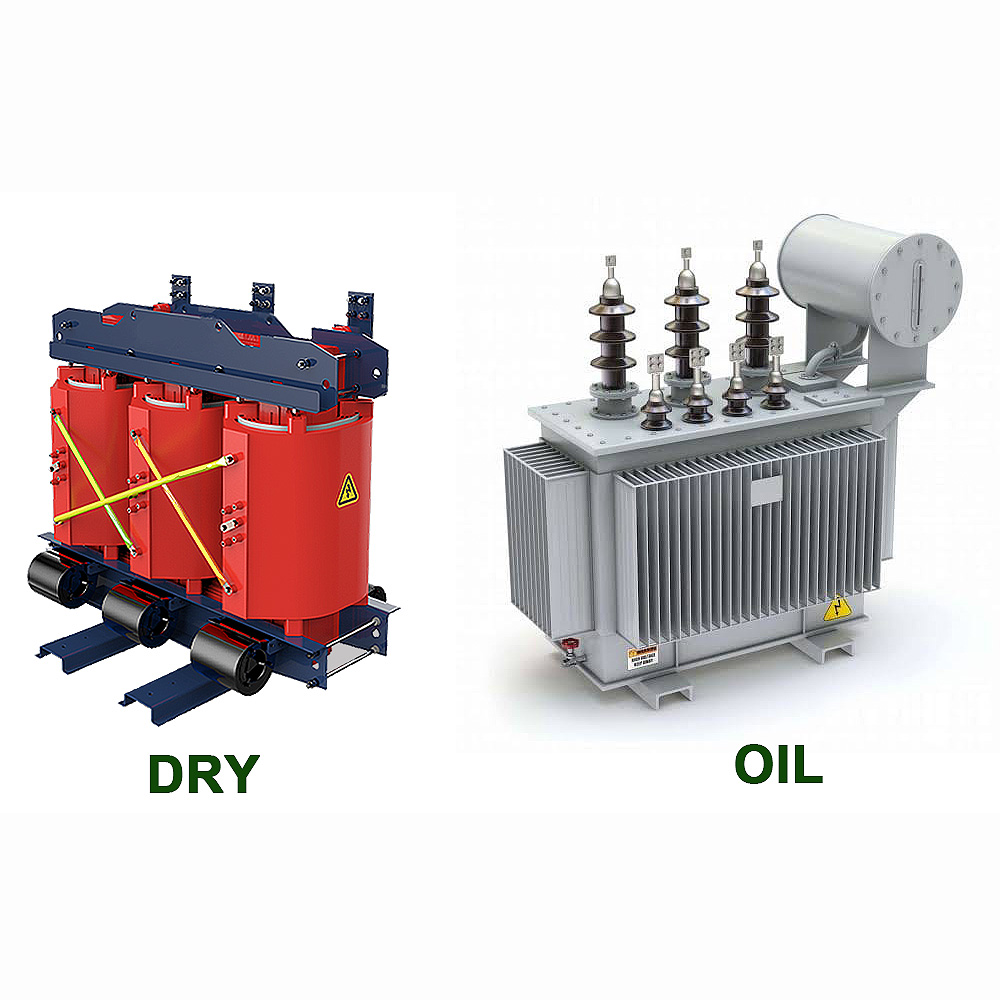Transformers are vital components in electrical networks, serving the crucial function of voltage transformation and power distribution. Among the various types of transformers, oil-immersed and dry-type transformers are the most prevalent, each with distinct advantages and application fields. Understanding the differences between these two types of transformers can help in making informed decisions based on operational requirements and environmental conditions.

Oil-Immersed Transformers
Oil-immersed transformers have been used for decades and are known for their reliability and efficiency. The core and coils in these transformers are submerged in insulating oil, which serves multiple functions:
- Cooling:The oil acts as a coolant, dissipating the heat generated during the transformer’s operation.
- Insulation: It provides excellent electrical insulation between internal live parts.
- Protection:The oil protects the transformer’s internal components from moisture and contaminants, which can degrade performance over time.
These transformers are commonly used in outdoor settings due to their robust design and ability to handle large power capacities. They are ideal for rural and suburban areas where space constraints are minimal. However, oil-immersed transformers pose environmental risks in the event of oil leaks, which can lead to soil and water contamination. Regular maintenance checks are required to monitor oil levels and ensure the integrity of the containment systems.
Dry-Type Transformers
In contrast, dry-type transformers do not use a liquid medium for cooling or insulation. Instead, they rely on air or other solid materials, such as resin, to keep the core and coils cool and insulated. The benefits of dry-type transformers include:
- Safety: No risk of oil leaks, making them safer for the environment and reducing the potential for fire hazards.
- Maintenance: These transformers require less maintenance as they do not involve oil management.
- Installation Flexibility: They can be installed indoors and in environments where space is limited or environmental sensitivity is a concern, such as in urban substations or inside commercial buildings.
Despite these advantages, dry-type transformers are generally more expensive than their oil-immersed counterparts and may have a lower power capacity. They also tend to operate at higher temperatures, which can affect their efficiency and lifespan.
Choosing the Right Transformer
The choice between an oil-immersed and a dry-type transformer often depends on several factors, including:
- Application Requirements: The power capacity and voltage requirements of the application.
- Environmental Conditions: Whether the transformer will be located indoors or outdoors.
- Safety Concerns: The importance of minimizing environmental and fire risks.
- Budget Constraints: Initial installation and long-term maintenance costs.
Both types of transformers have their place in the electrical distribution network. Oil-immersed transformers are suited for large-scale, high-capacity applications where cost-effectiveness is key, while dry-type transformers are preferable in sensitive environments where safety and low maintenance are prioritized.



